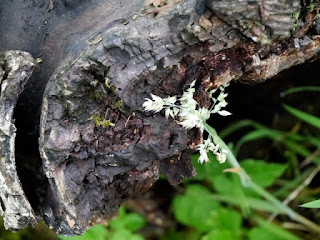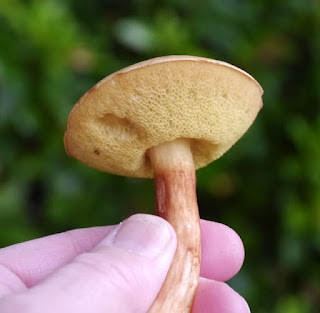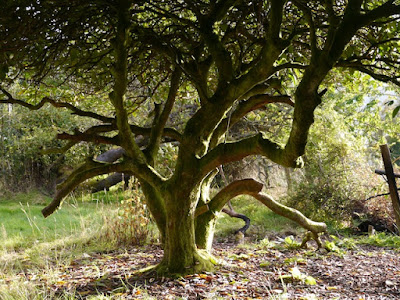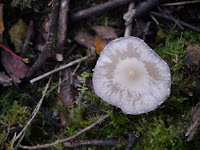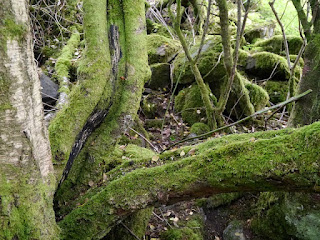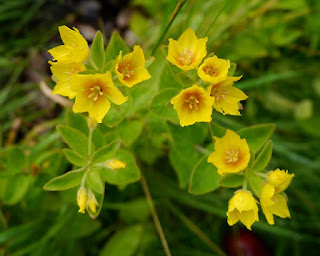On Sunday Little She Bear and I visited Bothwell Castle. We both loved its impressiveness of scale, the beautiful red sandstone it's made of and its situation beside the Clyde with the wonderful woods alongside. The visit has inspired us to walk the
Clyde Walkway in stages between the World Heritage Site at New Lanark to
Cambuslang where King Arthur, prince of the Welsh-speakers of Strathclyde, is reputed to have fought his last battle against invading Saxons.
We walked all around the outside of the castle before going in and paying the entrance fee, which we were happy to pay to help
Historic Scotland, now called Historic Environment Scotland, keep this magnificent ruin from deteriorating further.
From the back we found a way down the steep bank to the River Clyde into the wonderful Bothwell Woods.
Lots of evidence of children's (probably group) visits to the woods which was nice to see...

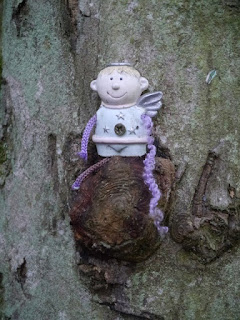

...and lots of sheer tree beauty. We both loved this enormous sycamore tree. It had several trunks so is probably several close together but at first sight it looks like one. Sycamores, like ashes, are weeds on our little peninsula north of the Clyde, growing tall and spindly for the most part, and in their hundreds. This one, or this group, showed how even common trees can be amazing plants when they have space to breathe, as it were.

 Looking up into the canopy and down at reflections in the river on such a lovely day was also a great experience.
Looking up into the canopy and down at reflections in the river on such a lovely day was also a great experience.
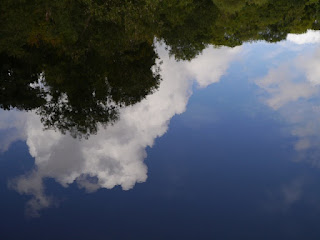



We enjoyed the sand ripples at the edge of the river and the evidence of sand layering in progress before making our way back up the riverbank. In the third photo, there is a tiddler; it looks like a little shadow in the pic. There were shoals of them.


And so, up to and into the castle we went. The grass really is that green.
We sat on one of the benches to eat our lunch of pork pie, cold boiled new potatoes with some mayonnaise to dip them in, tomatoes (those three brought by me), cheese and chutney sandwiches, apple, nuts and raisins, home-grown cucumber (those brought–made, in the case of the chutney– by LSB. Pooled picnics are the best.
Below is a small section of Bothwell Woods along the Clyde seen from the top of the castle keep.
We continued to enjoy the beautiful red sandstone both as used in the castle build, but also for its own sake. Beautiful stuff.




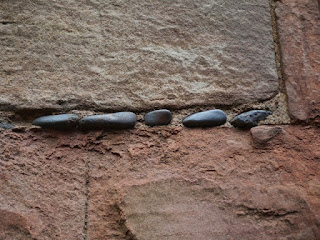 |
| A little repair |
 |
| Stone 'shot' for a trebuchet |
 |
| A stonemason's mark |
I think I need to bring my grandsons here, sometime.



